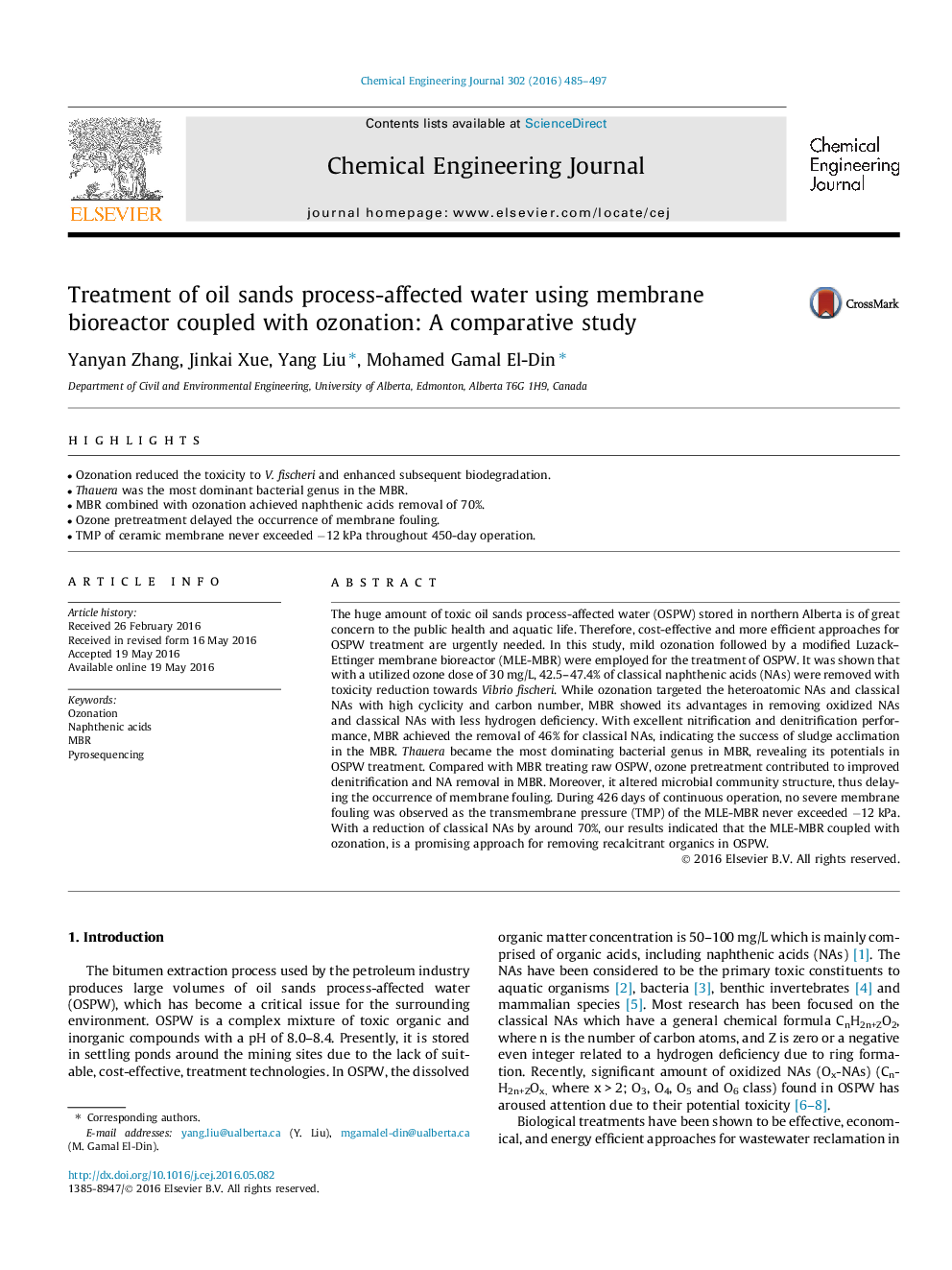| کد مقاله | کد نشریه | سال انتشار | مقاله انگلیسی | نسخه تمام متن |
|---|---|---|---|---|
| 145328 | 456338 | 2016 | 13 صفحه PDF | دانلود رایگان |
• Ozonation reduced the toxicity to V. fischeri and enhanced subsequent biodegradation.
• Thauera was the most dominant bacterial genus in the MBR.
• MBR combined with ozonation achieved naphthenic acids removal of 70%.
• Ozone pretreatment delayed the occurrence of membrane fouling.
• TMP of ceramic membrane never exceeded −12 kPa throughout 450-day operation.
The huge amount of toxic oil sands process-affected water (OSPW) stored in northern Alberta is of great concern to the public health and aquatic life. Therefore, cost-effective and more efficient approaches for OSPW treatment are urgently needed. In this study, mild ozonation followed by a modified Luzack–Ettinger membrane bioreactor (MLE-MBR) were employed for the treatment of OSPW. It was shown that with a utilized ozone dose of 30 mg/L, 42.5–47.4% of classical naphthenic acids (NAs) were removed with toxicity reduction towards Vibrio fischeri. While ozonation targeted the heteroatomic NAs and classical NAs with high cyclicity and carbon number, MBR showed its advantages in removing oxidized NAs and classical NAs with less hydrogen deficiency. With excellent nitrification and denitrification performance, MBR achieved the removal of 46% for classical NAs, indicating the success of sludge acclimation in the MBR. Thauera became the most dominating bacterial genus in MBR, revealing its potentials in OSPW treatment. Compared with MBR treating raw OSPW, ozone pretreatment contributed to improved denitrification and NA removal in MBR. Moreover, it altered microbial community structure, thus delaying the occurrence of membrane fouling. During 426 days of continuous operation, no severe membrane fouling was observed as the transmembrane pressure (TMP) of the MLE-MBR never exceeded −12 kPa. With a reduction of classical NAs by around 70%, our results indicated that the MLE-MBR coupled with ozonation, is a promising approach for removing recalcitrant organics in OSPW.
Journal: Chemical Engineering Journal - Volume 302, 15 October 2016, Pages 485–497
